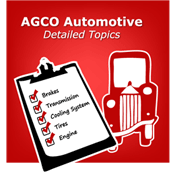Wheel balance is a topic surrounded by misunderstanding. Much of what people hear comes from tire-dealers who do not understand the subject. To make things worse, they may slant the information to increase sales rather than solve problems.
We need to balance tires, because they neither manufacture the wheel nor tire perfectly. When we mount the tire on the wheel, the differences combine and produce an unbalanced assembly. Rotating the unbalanced assembly produces vibration which is annoying and damaging to the suspension. They often call wheel and tire vibration a shimmy, which is the leading symptom of a wheel imbalance.
We call the simplest form of tire imbalance static. If we support a perfectly balanced wheel and tire at its center, the assembly rest perpendicular to the centerline of the support. An imbalance will push the heavier side of the assembly down.

Adding a weight, equal to the imbalance and 180' across from it, restores static balance. We balanced the tire and wheel assembly from one side to the other, or statically balanced it.

With narrow wheels and tires static balance is adequate. We counteract the heavy point at x, by adding weight at y. The weight may be added to either the front or rear of the wheel to achieve static balance.
As the width of wheels increased, dynamic balance became a factor. Basically the wheel is not only balanced side to side but also from the front plane to the rear plane.

The effect is sort of like having a stick with a string attached to one end and a weight on the end of the string. The weight represents the out of balance spot on the tire. As the string rotates the weight will rise to center. The same with a dynamically out of balance spot. As the tire rotates the weight wants to move to center causing a shimmy. The heavy point at x1 must be counter acted by adding weight at y1. All modern vehicles require dynamic wheel balance.

Wheel weights are used to balance wheels. Wheel weights come in a wide variety of sizes. They also come in many different shapes. The different shapes accommodate the different wheels they must fit. Using the improper weight will normally result in the weight coming off the wheel and a need for re-balance.
A properly done wheel balance will last the life of the tire, unless the tire has to be removed from the wheel or the wheel or tire is altered. Tires wear evenly around their circumference, so wear will not affect balance. If the proper weights are used and they are properly installed, will not come off.
Many other factors can and do cause vibration similar to wheel balance. It is important to remember that round and balanced are two different things. For instance an out of round tire. An out of round tire can be balanced. A square block could also be balanced, but it will also not roll without vibration.

Out of round, exceeding thirty-thousandths of an inch (0.030") will normally be felt as a vibration. Bent wheels and wheels with damaged center holes are other common causes of vibration and shimmy. Like an out of round tire, they too can be balanced, but will not roll without vibrating.
A few facts about tire balance:
- Tires do NOT routinely require balance. A proper balance lasts the life of the tire, unless something changes.
- Improper wheel weights are a leading cause of balance problems.
- Being balanced is NOT the same as being round. Out of round tires will still vibrate and balance will not help. Improper mounting can also ruin a new tire very quickly.
- It is not necessary to use more than one weight on either side of the wheel. Multiple weights normally indicate poor balance.
- Proper wheel balance requires a weight on both sides of the wheel. (In rare cases a weight may not be needed on one side or the other.)
- Tire rotation is totally separate from and does not affect wheel balance. You do NOT need to balance tires when rotated.
- Wheel alignment is totally separate from and does not affect wheel balance.
As with most things, an expert makes the job simple and quick. AGCO, is the place to go. We’ve been solving problems since 1974.







